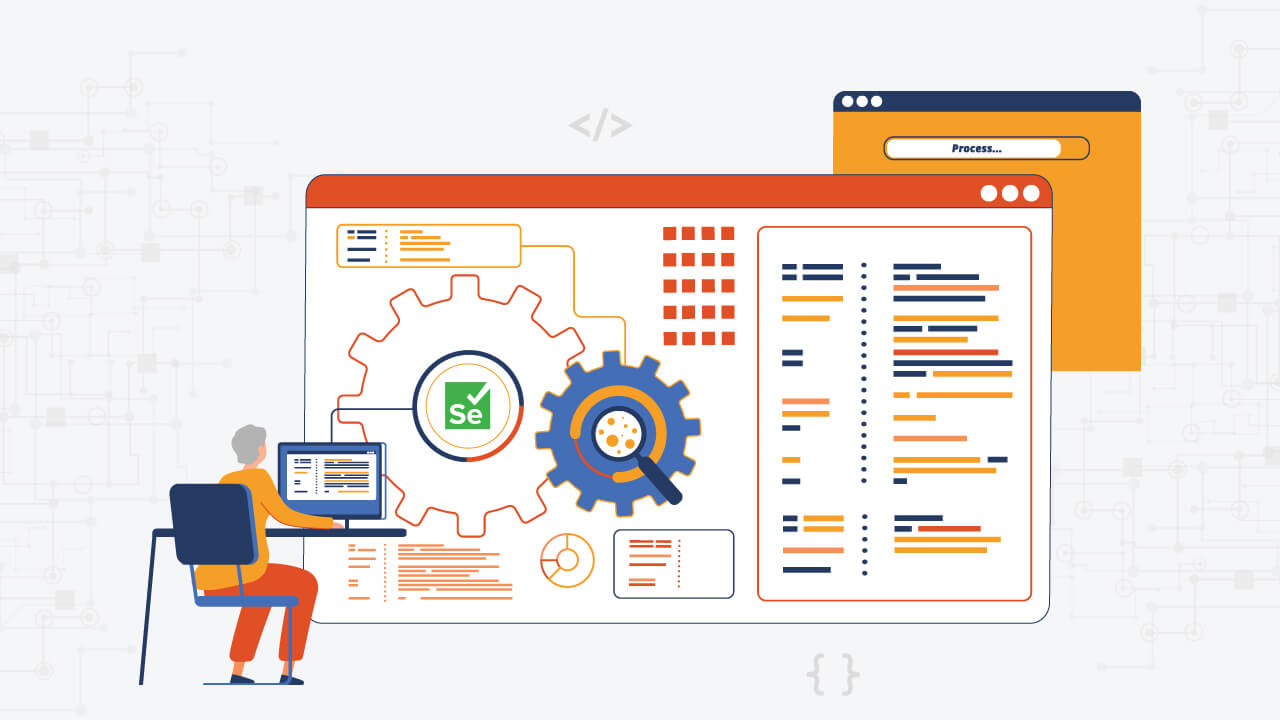Do you know Custom Test Reports in Selenium Automation? The current industry standard for ensuring that you complete all the test cases within the allotted time while also upholding the standards of the development process is automation testing. Modern apps are so complicated that manual testing teams require assistance to complete them effectively, which is the primary cause of this occurrence. This is because current one-stop apps require ongoing access to numerous aspects at once. The developers must validate the correct operation of each component individually and of the overall framework in order to complete this process. So, the developers can easily achieve this goal with the use of automation testing. Selenium had entire market autonomy in the early years of the automation business and was the sole viable alternative.
Explore the Contents
Custom Test Reports in Selenium Automation

Even after ten years, selenium continues to hold the top spot. The developers can utilize Selenium automation testing to its fullest extent by producing appropriate test reports. We’ll concentrate on a few crucial elements that can assist developers in personalizing their test reports. Let’s start out by talking about the fundamentals of Selenium-based automation testing.
Read More: Top 5 Consultant Automation (PSA) Technologies for 2023
The base of Test Automation

To put it simply, automated testing eliminates the need for human developers to be involved in the application testing process. This is due to the fact that the system may independently carry out the testing procedures with the aid of a particular text file thanks to the employment of this cutting-edge system. Several settings and datasets will be included in this text file to assist the test bench during the automation testing process. The data parameters are necessary to confirm that the application’s user interaction capabilities are correct. These characteristics will enable the system to interact with the web application in a manner similar to that of a typical user. It is important to note that developers can modify every parameter in the test file to meet the needs of the project to design an app. It is also simple to reuse specific portions of automation test files in new projects.
Yet, test automation has flaws just like any other component of the app development market. It is crucial to note that the main drawback of automation testing is that it demands a significant initial financial commitment. This is because, in order to begin the test automation process, the developers must first set up the test bench and integrate various plugins, libraries, and dependencies. Also, the high learning curve associated with test automation must be taken into account by the engineers. The developers and testers must become used to all of the current automation testing techniques during this procedure. Testers must also get a fundamental understanding of how the application works and the development process during this phase.
Developing an Idea for Selenium

Selenium is one of the most well-known brands in the automation testing industry, as was already said. Selenium has received a number of significant changes since its initial release in 2004 to make sure that the features are pertinent to contemporary application development techniques. Due to its reliance on the well-known programming language JavaScript, Selenium’s original name was JavaScriptTestRunner, which is an intriguing fact. We want to dispel the misconception that Selenium is a standalone tool in this section. Selenium is actually a test suite made up of a number of tools that are focused on various application development domains. In the final section of this post, we’ll talk more about these tools.
Selenium has a serious drawback, just like test automation. Selenium’s major flaw is that developers can only use this test suite to start and run automated testing on web applications. This restriction has the potential to severely impair a company’s ability to produce applications, especially in light of the diversity of the modern market, which includes a variety of applications such as native apps, hybrid apps, and cross-platform apps. In order to guarantee a seamless process for both the creation and testing of applications, a multiplatform developing organization needs have access to other test frameworks. Let’s now talk about the key characteristics of each tool included in the Selenium suite:
Selenium Grid
This Grid assists the developers in starting and running the parallel automation test cases. The developers can launch many test configurations at once using the parallel testing methodology. When app developers are working on complicated apps with thousands of different elements, this facility is quite helpful.
Selenium WebDriver
The Selenium WebDriver, in the opinion of many industry professionals, forms the basis of the test suite. The developers can use this tool to launch the testing procedure and assign the automated test cases to the items. Selenium WebDriver is an improvement to Selenium RC, which was previously deprecated. This is so that the Selenium WebDriver may interact with any component of the web browser natively.
Selenium IDE
Integrated Development Environment is represented by the acronym IDE. These tools make it simple for developers to produce the automation test files that the system will utilize to start and run test cases. The app developers must use the programmed as a typical user would in order to complete this process. The technology automatically creates the test cases in real time based on the interaction. The test cases are quite realistic because they are based on real-time interaction, which also aids in determining the web application’s right capabilities.
Creating Custom test Reports with Selenium Automation Testing

To appropriately personalize the test reports, we advise the developers to convert them into an HTML format. This is due to how simple it is to both grasp and adapt the HTML format. To create a tailored Selenium automation testing report, developers only need to carry out the following steps:
After completing the validation process, the first step in this procedure is to run the test cases and compile the necessary statistics. The programmers must include all the data required to appear in the final test report.
The data will then be transformed into an HTML format as the following step in this procedure. Developers only need to type a certain command into Selenium’s terminal window to complete this operation. With the use of the reporter method, developers can also add unique reporting features. This is so that the developers can save the final Test reports using this method in a format that they can use in subsequent procedures.
The developers need to make sure they are substituting the newly developed custom reporting methods for all of the default TestNG assertions.
The last step is for the developers to construct a class called test reports. This class will keep track of all the final reports and use an HTML file to present the findings. The developers must also specify the procedures to be followed in order to store all of the screenshots including the defects and problems found during the test execution process.
Influence of Platforms and Tools in Test Automation
As we just discussed, training new testers on test automation might be intimidating. Yet, a number of platforms and technologies can aid in streamlining this procedure. Also, these platforms permit extra features to raise the reliability and precision of the test cases. An excellent illustration is the mention of cloud testing platforms. Using these platforms, the developers can do without a physical test bench. This is so that developers can complete similar tasks while running test cases on the cloud thanks to these platforms. The developers can start automated test cases on particular platforms and devices that are no longer readily available in the market thanks to these platforms. By focusing on LambdaTest as a point of comparison, we may learn more about the advantages of adopting a cloud platform:
To wrap up the introduction, LambdaTest may be characterised as a safe cross-browser compatibility platform that aids web app developers in finishing the process. The latest industry standard for making sure you give your consumers the best user experience possible is cross-browser testing. This is so that the developers can guarantee stable web app performance regardless of changes made by the user to their operating system, browser, or entire device hardware. Advanced capabilities on this platform, like parallel test execution, increase its productivity by almost 15 times. The developers can import test cases from Selenium and other well-known frameworks like Shakespeare and Cypress using this platform.
This cloud platform assists businesses in ensuring the appropriate operation of web apps hosted inside and intended for business activities. Last but not least, adding a large number of actual devices to the current simulators and emulators greatly enhances the dependability and correctness of the final test findings.
Read More: 7 Benefits to Approach Digital Process Automation
Conclusion
With everything that has been covered in this article, it is clear that Selenium-based automation testing is one of the essential steps in the creation of contemporary applications. These cutting-edge methods enable developers to guarantee that their clients receive the greatest end-user experience possible. Furthermore, thorough test reports can assist the developers in determining whether the programmed is prepared to move to the production stage. We advise developers to maintain their knowledge and abilities current in light of all the developments that hit the market each year. Companies that specialize in app development are essential in this area for promoting appropriate awareness and the necessary knowledge. Finally, it’s critical to pick the right test automation tools to support your development techniques.



